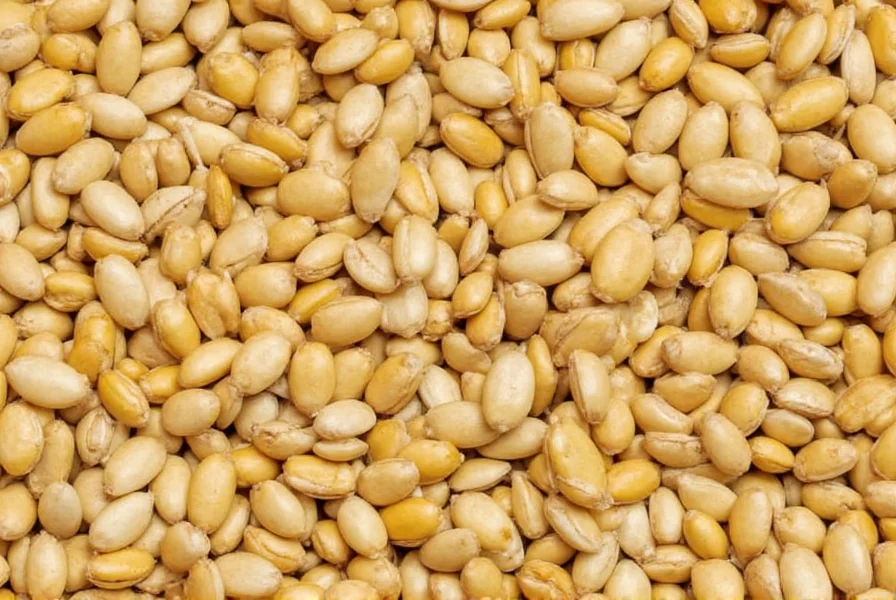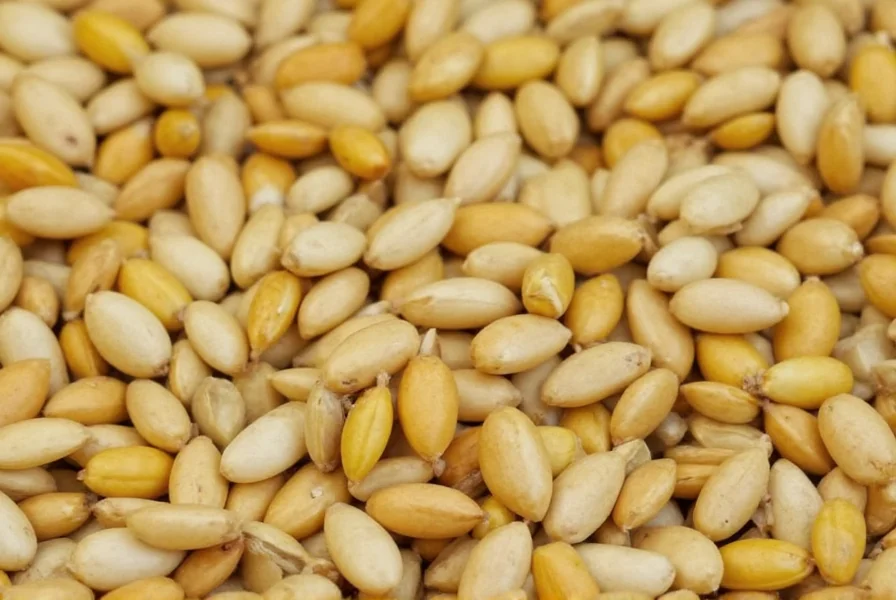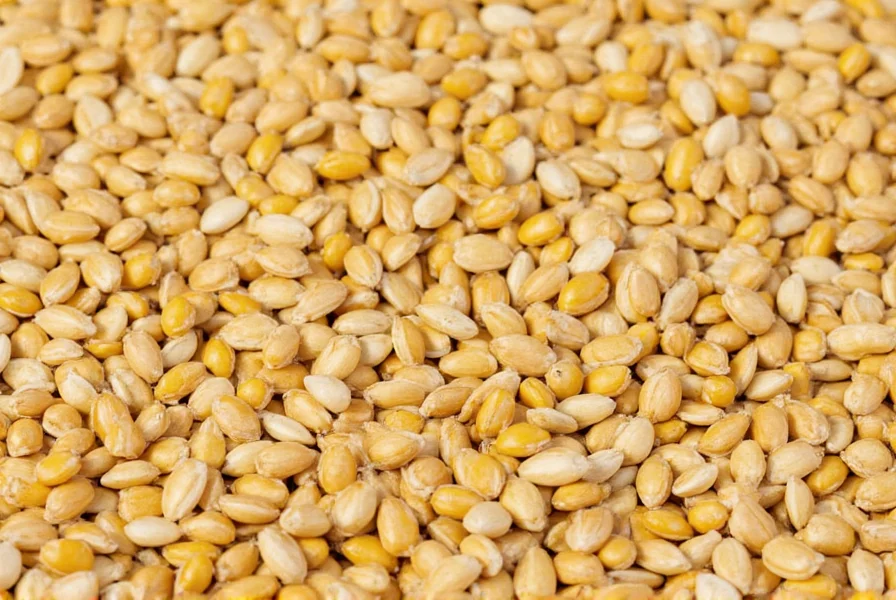Sesame seeds come from the Sesamum indicum plant, an annual flowering crop that grows 5-6 feet tall in warm climates. When ripe, its pods naturally burst open (a process called dehiscence) to release the tiny edible seeds.
If you've ever sprinkled sesame seeds on your bun or stir-fry and wondered what plant does a sesame seed come from, you're asking the right question. This ancient crop has been cultivated for over 3,000 years, yet many people remain unclear about its botanical origins. In this comprehensive guide, we'll answer your primary question immediately and provide valuable context about sesame cultivation, nutritional benefits, and culinary applications.
Table of Contents
- What Plant Does a Sesame Seed Come From? (Complete Botanical Explanation)
- Sesame vs. Other Popular Seeds: Nutritional Comparison
- Nutritional Benefits of Sesame Seeds
- Types of Sesame Seeds: White, Black, Brown Compared
- How to Choose Quality Sesame Seeds
- Global Culinary Uses of Sesame
- Proper Storage Methods
- Frequently Asked Questions
What Plant Does a Sesame Seed Come From? (Complete Botanical Explanation)
The sesame seed comes from Sesamum indicum, a resilient annual plant in the Pedaliaceae family. Native to sub-Saharan Africa, this flowering plant thrives in tropical and subtropical regions worldwide, particularly in India, China, Myanmar, and Sudan—the top global producers.
Here's what makes the sesame plant unique:
| Botanical Feature | Description | Significance |
|---|---|---|
| Plant Height | 5-6 feet tall | Allows for efficient harvesting in commercial operations |
| Flowers | Trumpet-shaped, yellow or white | Bloom for just one day before developing seed pods |
| Seed Pods | Elongated capsules containing 15-20 seeds each | Exhibit dehiscence—burst open when ripe to release seeds |
| Seed Color Varieties | White, black, brown, golden | Color indicates processing level and nutrient concentration |
The most fascinating characteristic is dehiscence—the plant's natural mechanism where seed pods dramatically split open when ripe. This ancient survival strategy explains the "Open Sesame!" phrase from Middle Eastern folklore, as the sudden pod opening would reveal the valuable seeds.
Historical Context: Sesame Through the Ages
Sesame cultivation dates back to 1600 BCE, making it one of the oldest oilseed crops. Historical evidence shows:
- Ancient Egyptians used sesame in breads and medicines
- Mesopotamians valued sesame oil as currency
- Ayurvedic traditions praised its healing properties
- Egyptian tomb paintings depict sesame harvesting techniques
Sesame vs. Other Popular Seeds: Nutritional Comparison
While sesame seeds may be small, they deliver impressive nutritional benefits compared to other common seeds:
| Nutrient (per 100g) | Sesame | Chia | Flax | Pumpkin |
|---|---|---|---|---|
| Calcium | 975mg | 631mg | 255mg | 19mg |
| Iron | 14.6mg | 7.7mg | 5.7mg | 8.8mg |
| Healthy Fats | 50g | 31g | 42g | 49g |
| Protein | 18g | 16g | 18g | 19g |
| Fiber | 12g | 34g | 27g | 19g |
Key insight: Sesame seeds contain nearly four times more calcium than flax seeds and over 50 times more than pumpkin seeds. Just one ounce (28g) provides 35% of your daily calcium needs—making it exceptionally valuable for bone health.
Nutritional Benefits of Sesame Seeds
Beyond answering "what plant does a sesame seed come from," understanding its nutritional profile explains its global culinary importance:
- Calcium powerhouse: Essential for bone health, especially valuable in plant-based diets
- Iron-rich: 14.6mg per 100g helps prevent anemia and boost energy levels
- Magnesium source: Supports over 300 enzymatic reactions in the body
- Lignans: Sesamin and sesamolin provide potent antioxidant effects
- Healthy fats: 50g of unsaturated fats per 100g support heart health
Pro tip: Toasting sesame seeds increases calcium bioavailability by breaking down phytic acid in the seed hull. For maximum nutritional benefit, lightly toast seeds before consumption.
Types of Sesame Seeds: White, Black, Brown Compared
Understanding the different varieties helps you choose the right type for your culinary needs:
| Type | Processing | Nutritional Advantage | Best Culinary Uses |
|---|---|---|---|
| White Sesame | Hulled, often toasted | Milder flavor, versatile | Baking, hamburger buns, light sauces |
| Black Sesame | Unhulled | Higher antioxidants, calcium | Asian cuisine, desserts, visual contrast |
| Brown/Golden Sesame | Partially hulled | Balanced nutrition and flavor | Tahini, roasted dishes, savory applications |

The color difference primarily comes from processing. Black sesame retains its hull, preserving more nutrients but delivering a stronger flavor. White sesame has the hull removed, resulting in milder taste but slightly reduced nutritional value.
How to Choose Quality Sesame Seeds
When selecting sesame seeds, focus on these quality indicators:
- Whole over ground: Purchase whole seeds and grind as needed for maximum freshness
- Fresh aroma: Should smell mildly nutty, never rancid or musty
- Uniform color: Consistent coloring indicates proper processing
- Packaging date: Look for recent harvest dates, especially for black sesame
- Origin matters: Japanese black sesame, Indian white, and Ethiopian brown are premium varieties
Top product recommendations:
- Now Foods Organic Sesame Seeds: USDA certified, versatile for everyday use
- Kikkoman Black Sesame Seeds: Authentic Japanese variety for Asian cuisine
- Sprout Living Golden Sesame: Low-temperature processed for nutrient retention

Global Culinary Uses of Sesame
The Sesamum indicum plant has inspired diverse culinary traditions worldwide:
- Middle East: Tahini (sesame paste) forms the base for hummus and halva
- East Asia: Goma (toasted sesame) enhances sushi, rice bowls, and dressings
- India: Used in sweets like ladoo and savory spice blends
- Mexico: Incorporated into achiote paste for traditional cooking
- Mediterranean: Sprinkled on breads and flatbreads for texture and flavor
- United States: Classic topping for hamburger buns and bagels
Easy recipe: Make authentic tahini by blending 1 cup toasted sesame seeds with 3-4 tablespoons of neutral oil until smooth. Add lemon juice and salt to taste for instant Middle Eastern flavor.
Proper Storage Methods for Maximum Freshness
To preserve the delicate oils in sesame seeds:
- Unopened packages: Store in cool, dark place for up to 6 months
- Opened seeds: Transfer to airtight container in refrigerator (up to 1 year)
- Toasted seeds: Cool completely before storing; freeze for longest shelf life
- Whole vs. ground: Whole seeds stay fresh significantly longer than pre-ground
Warning sign: If seeds develop a bitter taste or rancid odor, discard immediately—this indicates oxidation of the healthy fats.
Frequently Asked Questions
What plant does a sesame seed come from?
Sesame seeds come from Sesamum indicum, an annual flowering plant in the Pedaliaceae family. This plant grows 5-6 feet tall in warm climates and produces seed pods that naturally burst open (dehiscence) when ripe, releasing the characteristic white, black, or brown seeds.
Is sesame a nut or seed?
Sesame is a true seed, not a nut. It comes from the Sesamum indicum plant's seed pods. Despite being a seed, sesame is classified as a major food allergen in the United States (as of 2023) due to its potential to cause severe allergic reactions in sensitive individuals.
Why do sesame seeds pop out of their pods?
This natural phenomenon is called dehiscence. Sesame seed pods develop tension as they dry, eventually causing them to split open violently and disperse the seeds. This evolutionary adaptation helps the plant spread its seeds but creates harvesting challenges, which is why many modern varieties are 'indehiscent' (non-splitting) for easier collection.
Can you grow sesame plants at home?
Yes, sesame can be grown in home gardens in warm climates (USDA zones 9-11). It requires 120-150 frost-free days, full sun, and well-draining soil. Start seeds indoors 6-8 weeks before last frost, then transplant outdoors when soil reaches 70°F (21°C). The plants need consistent moisture during flowering but less water as seeds mature.
What's the difference between sesame oil and toasted sesame oil?
Regular sesame oil is made from raw seeds and has a light color with mild flavor, suitable for high-heat cooking. Toasted sesame oil uses roasted seeds, resulting in a darker color, stronger aroma, and richer flavor. It's primarily used as a finishing oil in small amounts for Asian cuisine, not for frying due to its lower smoke point.











 浙公网安备
33010002000092号
浙公网安备
33010002000092号 浙B2-20120091-4
浙B2-20120091-4